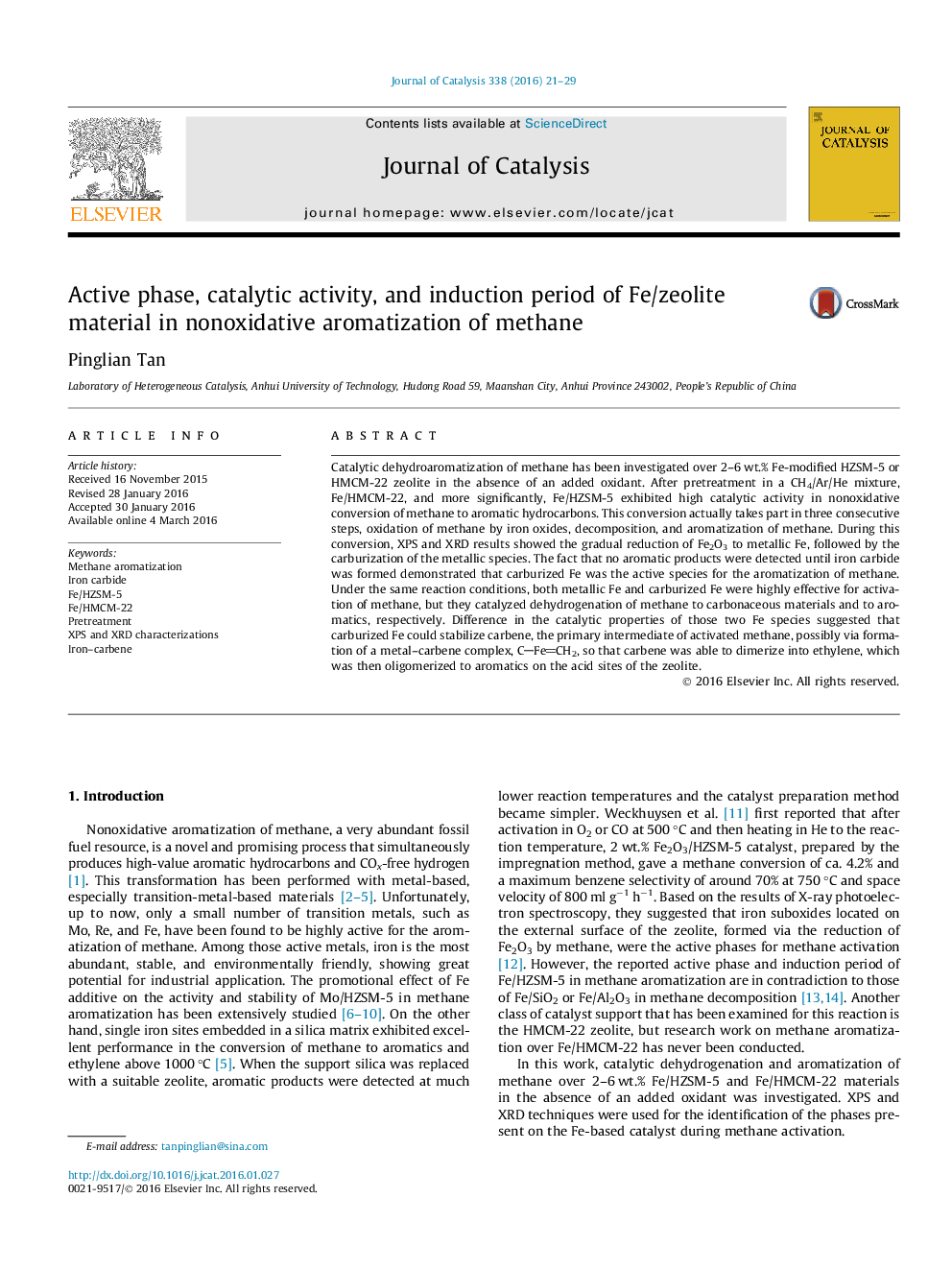| کد مقاله | کد نشریه | سال انتشار | مقاله انگلیسی | نسخه تمام متن |
|---|---|---|---|---|
| 60614 | 47540 | 2016 | 9 صفحه PDF | دانلود رایگان |

• Fe/zeolite exhibits a high catalytic activity in the conversion of CH4 to aromatics.
• The conversion includes 3 periods: oxidation, decomposition and aromatization of CH4.
• Fe and FeCx are detected in CH4 decomposition and aromatization period, respectively.
• Iron carbide is the active phase for the catalytic aromatization of methane.
• The stability of carbene on FeCx is enhanced via the formation of delocalized π-bond.
Catalytic dehydroaromatization of methane has been investigated over 2–6 wt.% Fe-modified HZSM-5 or HMCM-22 zeolite in the absence of an added oxidant. After pretreatment in a CH4/Ar/He mixture, Fe/HMCM-22, and more significantly, Fe/HZSM-5 exhibited high catalytic activity in nonoxidative conversion of methane to aromatic hydrocarbons. This conversion actually takes part in three consecutive steps, oxidation of methane by iron oxides, decomposition, and aromatization of methane. During this conversion, XPS and XRD results showed the gradual reduction of Fe2O3 to metallic Fe, followed by the carburization of the metallic species. The fact that no aromatic products were detected until iron carbide was formed demonstrated that carburized Fe was the active species for the aromatization of methane. Under the same reaction conditions, both metallic Fe and carburized Fe were highly effective for activation of methane, but they catalyzed dehydrogenation of methane to carbonaceous materials and to aromatics, respectively. Difference in the catalytic properties of those two Fe species suggested that carburized Fe could stabilize carbene, the primary intermediate of activated methane, possibly via formation of a metal–carbene complex, CFeCH2, so that carbene was able to dimerize into ethylene, which was then oligomerized to aromatics on the acid sites of the zeolite.
Figure optionsDownload high-quality image (94 K)Download as PowerPoint slide
Journal: Journal of Catalysis - Volume 338, June 2016, Pages 21–29